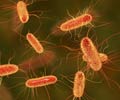Emerging infectious diseases like H5N1 bird flu highlight the urgent need for global preparedness.
- H5N1 bird flu has a high mortality rate, with 30% in some cases
- A single mutation could enable human-to-human transmission
- Governments are stockpiling vaccines and adopting the "One Health" approach
Which infectious disease is likely to be the biggest emerging problem in 2025?
Go to source). However, a new contender for the "next big threat" is emerging: H5N1, commonly referred to as Avian Influenza. This highly pathogenic bird flu is rapidly passing the avian population throughout the world and recently attacked mammals like dairy cattle and horses.
H5N1: A Growing Concern
Despite the sporadic incidence in human beings, 61 cases has only been recorded in the US this year, the death rate of H5N1 high rises to 30% in some cases. An unprecedented high record of human infection and becoming sick from bird flu has therefore placed bird flu at a very premium position on the public health agenda.Preparedness and Prevention Against H5N1
At the moment, H5N1 does not easily spread from one person to another. This is because the virus has developed its affinity to attach itself only to the receptors that are present in avian cells and not those cells owned by human beings. But the new studies, published in the past year, have shown that a single genetic change could make this happen—the virus could easily spread from human to human, which would lead to a pandemic.Understanding this threat, administrations all over the globe have been developing strategies of pandemic preparedness, accumulating vaccines and working on quick responses. For instance, the UK has contracted for five million doses of the H5N1 vaccine in view of a possible emergence of an outbreak.
The "One Health" Approach
Since new Emerging Infectious Diseases ( EIDs) are a threat that targets not just human beings, but animals and the environment, the problems must be solved applying the “One Health” concept. First and foremost, by dissecting diseases in other living organisms and ecosystems one can be able to protect human beings in a better way. On the other hand, if infectious diseases in humans are followed up and prevented, animals and the environment will also be protected.The alarming threat of H5N1 requires constant precautions against other ongoing infectious diseases, including malaria, HIV, and Tuberculosis. Thus, the promising application of reliable methods of surveillance, quick response strategies, and an integrative “One Health” concept can address the challenges associated with new epidemic threats and protect people’s health in the coming years.
Reference:
- Which infectious disease is likely to be the biggest emerging problem in 2025? - (https://www.downtoearth.org.in/health/which-infectious-disease-is-likely-to-be-the-biggest-emerging-problem-in-2025)
Source-Medindia















